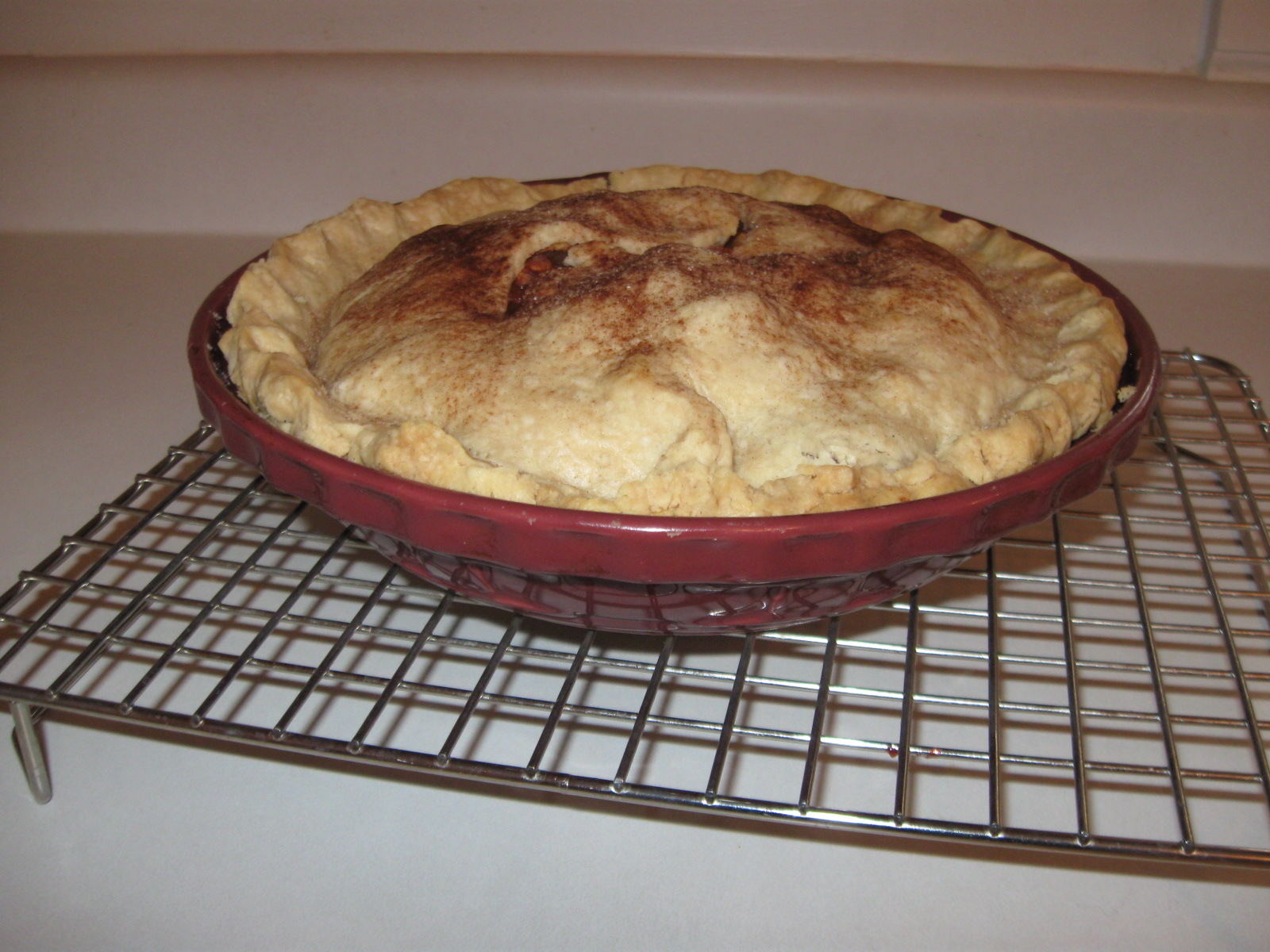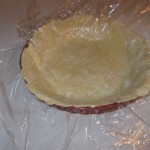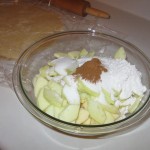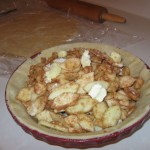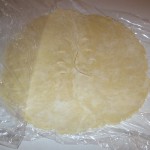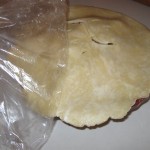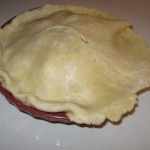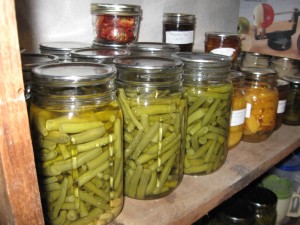
It’s the season for baking and potluck dinners and parties and candy-making and warm, delicious drinks…
I’m making a homemade apple pie for a potluck dinner this evening. I know that, when I was growing up, it was already considered something a bit special to make pies well. So now, it is even more unusual for folks to make their own piecrust and pies.
Making piecrust isn’t really that difficult, but it is daunting to those who’ve never done it. Today I’m using the recipe my grandma used:
3 cups flour
1 tsp. salt
Whisk together, then add:
1 cup shortening
Cut the shortening into the flour mixture with a fork until the size of the shortening pieces are no larger than pea-size.
about 2/3 cup ice-cold water
Stir in the water with the fork until it just forms a ball. Add more water if needed, but don’t overdo it.
Divide the dough into 3 pieces. Use two for this pie… save the other for a delicious pecan pie (just a suggestion).
To roll it out, I must admit that I use plastic wrap to line my countertop, place the dough on top and then cover with another layer of plastic wrap. Then I roll the dough out to the desired size between the layers. This allows me to avoid the muss of rolling directly on the countertop and also removes the need for adding extra flour to prevent sticking to the rolling pin.
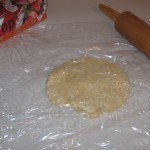
The plastic wrap makes it easy to place into the pie dish with no mishaps…
The apples are peeled, sliced… add sugar to taste — in this case about 2/3 cup (these apples were a combination of Galas and Braeburns — the Braeburns have a wonderful, tart flavor), 1 tsp. cinnamon and 1/4 c. flour.
After stirring to coat the apple slices, pour into prepared pie shell and dot with butter.
The top crust must have a few openings to allow the air to vent during baking. This pattern is the same used by my mother and grandma…
The plastic wrap makes it easy to center the top crust without tearing…
Fold the top crust under the edge of the bottom crust and crimp the edges…
Sprinkle on cinnamon sugar, if desired…
Enjoy with whipped cream, ice cream, or a slice of sharp cheddar cheese… yummm.

